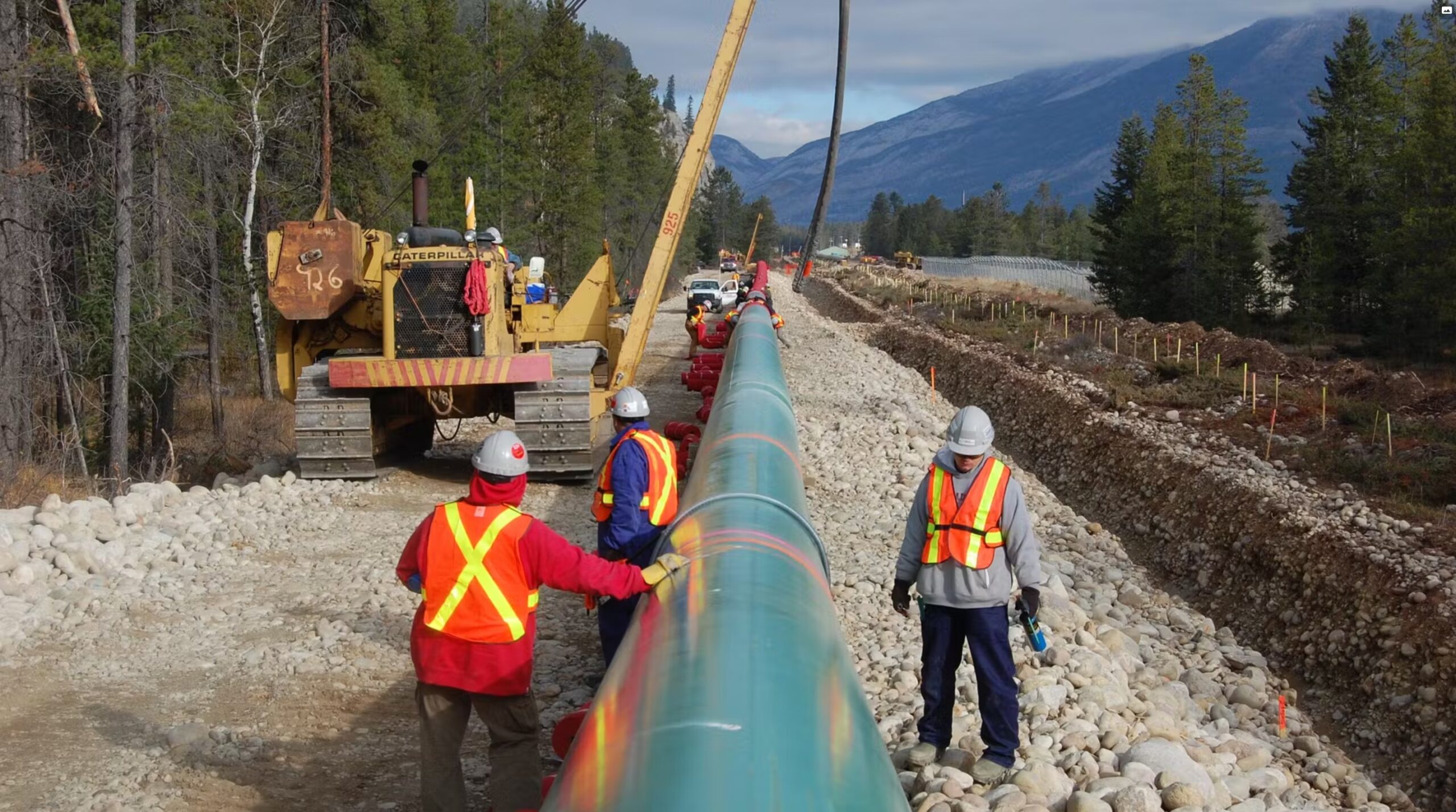Revive Northern Gateway pipeline to build strong resource corridor
The attached article is a copy of the original that can be found here. NORTHERN BEAT Please read it there and if that fails read it here. Also read Tanker ban is an epic fail that hurts Canadians
Revive Northern Gateway pipeline to build strong resource corridor
Political changes at the top in both Canada and the U.S. usher in a new period of uncertainty and threats for B.C.’s already weakened resource economy.
The blows keep coming for our forest industry, with incoming U.S. president Donald Trump vowing to ramp up his country’s 30-year attack on lumber imports with across-the-board tariffs that would double the current pain, and extend it to all imports including oil and gas.
Those products are at the core of B.C.’s economy and its reliance on U.S. customers.
As forest companies struggle and go under, the latest “review” of B.C. lumber tariffs by the U.S. commerce department is coming up in May. The punitive duties nearly doubled in 2024, to more than 14 per cent, and they may double again based on Trump’s nonsensical threats.
And as long-standing community pillars like the Plateau sawmill in Vanderhoof fall silent, three historic projects are at or nearing completion. The Site C dam, the Coastal GasLink pipeline, and LNG Canada are seeing thousands of skilled construction workers wind up and move on.

Northern Gateway could be revived
One new project that could be reactivated is the Northern Gateway oil pipeline, snuffed out by Prime Minister Justin Trudeau’s environmental posturing. Already burdened by court challenges, Enbridge’s Northern Gateway was killed by Trudeau’s 2016 declaration that oil tankers shouldn’t be allowed near the “Great Bear Rainforest.”
He is among many urban people who are unaware this faux-Indigenous name was dreamed up by professional environmentalists at a fancy restaurant in San Francisco, explicitly to create a barrier for Canadian oil exports to Asia.
Those Asia exports have finally begun to flow in significant volumes through the recent Trans Mountain pipeline expansion, which has been mostly at capacity since it opened. As has historically been the case since the first Trans Mountain pipeline was completed in 1954, much of the crude continues to head for U.S. refineries in Washington, California and the Gulf Coast that are geared for heavy oil.
Tariff threat based on misunderstanding
Trump’s ignorance is even more frightening than Trudeau’s.
Last week, Trump went on social media and hotly denied a Washington Post story that he would be backing off on imposing 25-per-cent tariffs across the board on Canada and Mexico as soon as he takes office. He remains convinced the trade deficit with Canada is a subsidy, rather than the natural result of being beside a resource-rich country with a tenth of the population.
John Bolton, who lasted two years as Trump’s national security advisor in his first term, says Trump fundamentally misunderstands tariffs. In a pre-Christmas interview with the Globe and Mail, Bolton said Trump couldn’t be moved from his belief that tariff revenues flow to the U.S. government.
B.C. knows all too well how it works, when the U.S. softwood lobby directs the government to use trade barriers to suppress competition. Billions of dollars are held in a bank account as Canada appeals to international trade regulators. Previously, Canada managed to recoup some of it, until U.S. officials figured out how to jam the appeal process by not appointing their own representatives.
Among his tariff threats, Trump has mused he may restart the Keystone XL oil pipeline, pipe for which had to be dug up and trucked away after outgoing President Joe Biden decided on his first day the project should be used to bow to his environmentalist backers and attack his northern neighbour’s oil industry.
Good luck finding anyone willing to put up more billions to restart Keystone XL.
Even without Keystone, about 60 per cent of U.S. oil imports come from Canada. That’s the magnitude of Trump’s threat – to do to oil and gas what his country has habitually done to lumber, enriching the domestic industry while starving the market and driving up U.S. consumer prices.
Pipelines could create Northern resource corridor
Reviving Northern Gateway is more practical.
As recently as 2021, then-Conservative leader Erin O’Toole campaigned on a promise to do just that. Originally backed by Enbridge, the route began in Bruderheim, east of Edmonton, crossed northern B.C., passing near Fort St. James, Burns Lake, and Houston, terminating at Kitimat.

The Enbridge Northern Gateway project had one-third ownership by Indigenous communities, before the now-familiar coalition of environmental organizations and Indigenous opponents derailed it with a court challenge claiming insufficient consultation. Trudeau declined to do that consultation, which effectively cancelled the project.
Northern Gateway is similar to the Coastal GasLink route, which runs from B.C.’s northeast to Kitimat. Coastal GasLink was finally completed in 2024 despite years of court challenges, blockades, and orchestrated vandalism.
Whether a new federal government can or wants to revive Northern Gateway is unknown. But combined with Coastal Gaslink, it would build on a northern resource corridor that could also include the already-permitted Prince Rupert Gas Transmission line now proposed by TC Energy and the Nisga’a government.
The Prince Rupert line would supply a floating LNG plant, and new power lines along the energy corridor could help serve the needs of the broad expanse of northern B.C. that remains off the grid.

